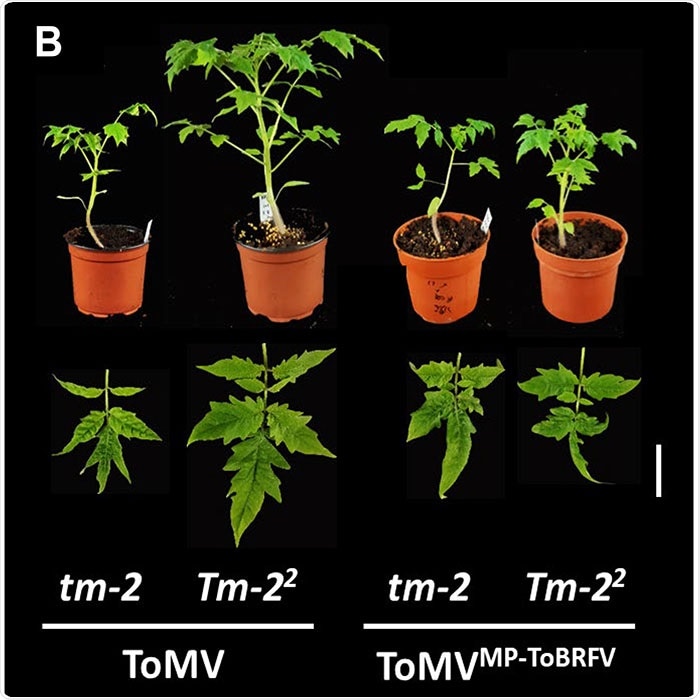A new viral tomato disease that broke in the past few years has threatened tomato production across the globe. This disease is caused by the Tomato brown rugose fruit virus (ToBRFV), which belongs to a destructive class of plant viruses known as tobamoviruses.

Tomato plants (cv. Moneymaker) (upper panel) and leaves (lower panel) homozygous to the tm-2 or Tm-22 allele infected with ToMV and ToMVMP-ToBRFV. Image Credit: Hagit Hak and Ziv Spiegelman.
ToBRFV can overpower all known tobamovirus resistance in tomatoes, such as the one bestowed by Tm-22—a resistance gene that has been offering stable resistance to such viruses for over six decades.
As part of a new study, Dr Ziv Spiegelman and Dr Hagit Hak investigated the molecular mechanism through which the emerging virus could successfully overpower this resistance and turn into a destructive global crop pandemic. The study was published recently in the Molecular Plant-Microbe Interactions (MPMI) journal.
Tm-22 encodes a plant immune receptor protein, which recognizes a viral-encoded protein named movement protein, triggering an immune response against a wide range of tobamoviruses. ToBRFV is the first virus that was able to overcome the durable Tm-22 resistance gene.”
Dr Ziv Spiegelman, Department of Plant Pathology and Weed Research, Agricultural Research Organization-The Volcani Center
“We found that the ToBRFV movement protein harbored sequence changes that allow it to evade Tm-22. We confirmed this by introducing this new sequence to another virus (the tomato mosaic virus) that normally cannot infect plants harboring Tm-22, which resulted in a virulent virus,” added Dr Spiegelman.
Moreover, the researchers made an interesting observation from an evolutionary perspective.
Viral movement proteins allow the virus to spread from cell to cell and infect the entire plant. We found that the elements that enabled the movement protein to avoid Tm-22 recognition likely resulted in reduced viral movement.”
Dr Ziv Spiegelman, Department of Plant Pathology and Weed Research, Agricultural Research Organization-The Volcani Center
“This suggests that the virus pays a penalty for evading host resistance, which is a reduced cell-to-cell transport. This finding may explain the high durability of Tm-22 resistance, which had remained unbroken for over half a century,” concluded Spiegelman.
Source:
Journal reference:
Hak, H & Spiegelman, Z (2021) The Tomato Brown Rugose Fruit Virus Movement Protein Overcomes Tm-22 Resistance in Tomato While Attenuating Viral Transport. Molecular Plant-Microbe Interactions. doi.org/10.1094/MPMI-01-21-0023-R.